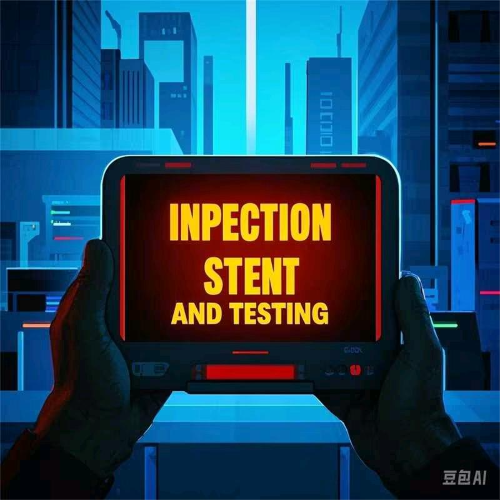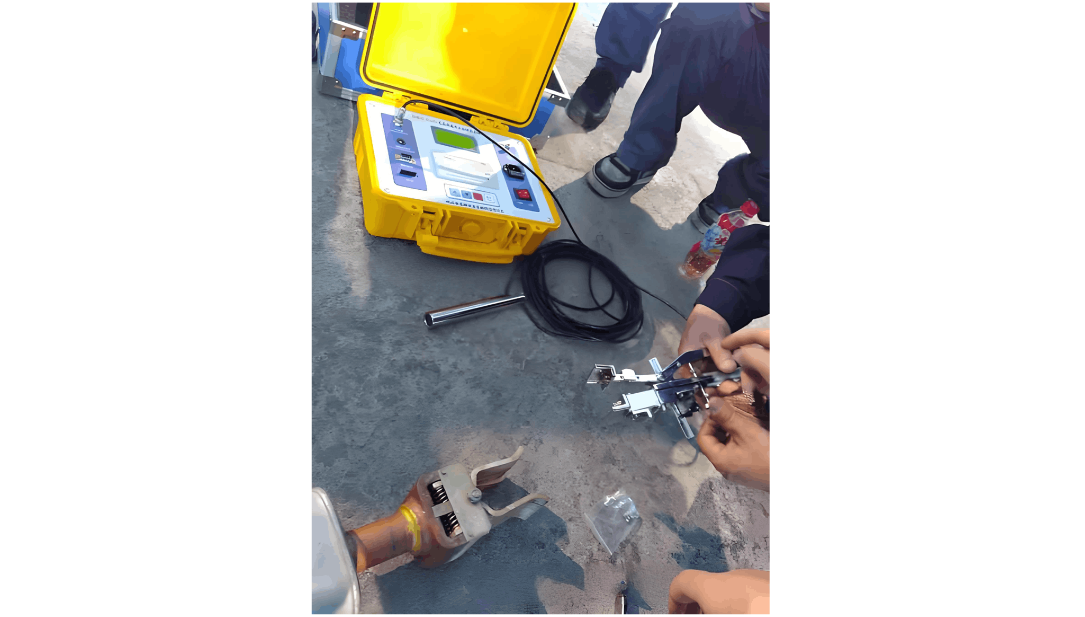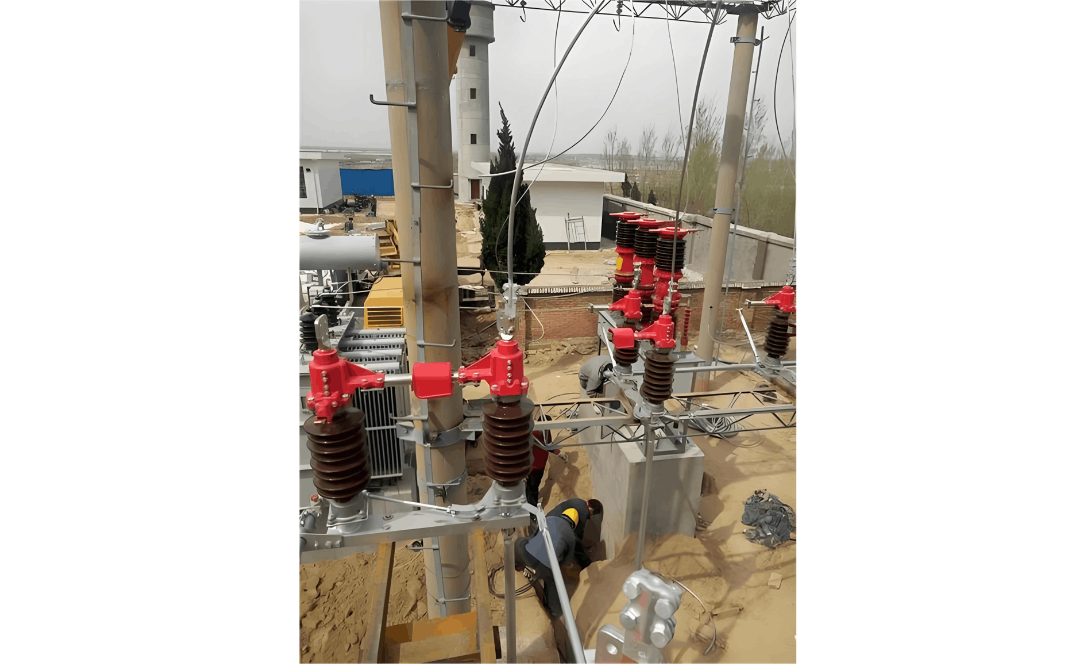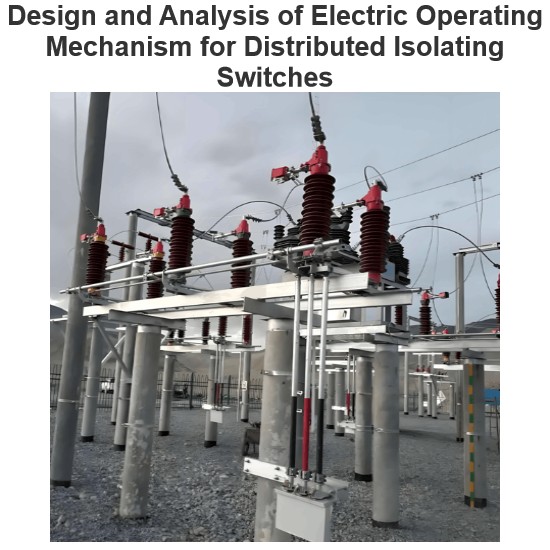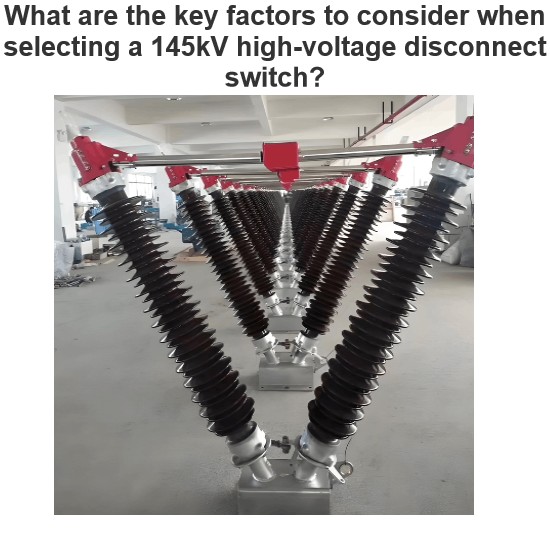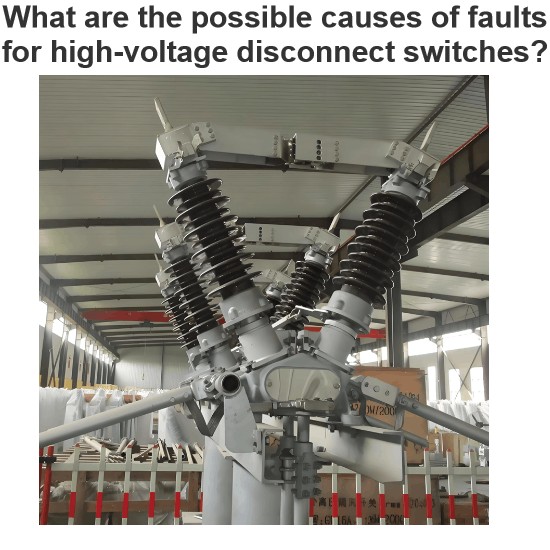1. Introduction
High-voltage disconnect switches play a pivotal role in ensuring the safe and efficient operation of power grid infrastructure. Among various voltage-class switches, 126kV high-voltage disconnect switches are widely applied in medium-to-high voltage grids. In a country like Indonesia, with its vast territory and diverse geographical and climatic conditions, ensuring the reliable operation of power grid equipment is of great significance. The insulation performance of high-voltage disconnect switches is critical, as any insulation failure can lead to power outages, equipment damage, and even pose risks to personnel safety. This paper focuses on the key elements of insulation testing for 126kV high-voltage disconnect switches, aiming to provide a comprehensive reference for power grid operators and maintenance personnel.
2. Standards and Specifications
2.1 IEC 62271-102 Standard
The IEC 62271-102 standard serves as an international benchmark for high-voltage switchgear and controlgear, including high-voltage disconnect switches. For 126kV disconnect switches, this standard specifies detailed requirements for insulation, defining the minimum insulation levels that switchgear must meet under different test conditions, such as power-frequency withstand voltage tests and impulse withstand voltage tests.
During the power-frequency withstand voltage test, a 126kV high-voltage disconnect switch is typically required to withstand a specified voltage level (e.g., approximately 230kV for 1 minute as per the standard) without breakdown or flashover. This test simulates normal operating voltage stress and temporary overvoltage conditions that the switch may encounter during its service life. The impulse withstand voltage test, using a high-voltage impulse waveform (e.g., 1.2/50μs), simulates lightning strikes or switching surges. The 126kV disconnect switch must withstand a specified impulse voltage (e.g., approximately 550kV) without insulation failure, ensuring reliable operation under extreme transient voltage conditions.
3. Environmental Considerations in Indonesia
3.1 Climatic Conditions
Indonesia's tropical climate is characterized by high temperatures, high humidity, and frequent rainfall throughout the year. The average temperature in most regions ranges from 25°C to 27°C, with relative humidity often exceeding 70%. Such high-humidity environments significantly affect the insulation performance of 126kV high-voltage disconnect switches. Moisture condensation on insulation surfaces reduces surface resistivity, potentially causing surface flashover.
Additionally, Indonesia is prone to heavy rainfall and tropical storms. Outdoor-installed high-voltage disconnect switches must withstand the impact of rain and strong winds. For example, in typhoon-prone areas, switches should have sufficient mechanical strength to prevent insulation structure damage from wind-driven rain or physical impacts.
3.2 Dust and Pollution
Industrial activities and natural phenomena in Indonesia can lead to airborne dust and pollution. Industrial areas may have dust containing conductive particles or corrosive substances, while agricultural areas may have soil or crop dust. These pollutants accumulate on the insulation surfaces of disconnect switches, increasing the risk of insulation failure.
Particularly in Indonesia's coastal areas, salt-laden ocean air deposits on switchgear. Salt corrodes metal components and affects insulator insulation performance, gradually reducing electrical strength and increasing the likelihood of electrical breakdown.
4. Insulation Testing Methods
4.1 Insulation Resistance Testing
Insulation resistance testing is a fundamental method to assess the insulation condition of 126kV high-voltage disconnect switches, measuring the resistance between live parts and grounded parts using a high-voltage megohmmeter.
During the test, the megohmmeter connects between the disconnect switch's high-voltage terminal (in the open state) and the ground terminal. The applied test voltage should match the switch's voltage class—typically 2500V or 5000V for 126kV switches. A high insulation resistance value (often several hundred megohms or more for healthy switches) indicates good insulation. A significantly lower value may signal moisture ingress, insulation degradation, or surface contamination.
4.2 Power-Frequency Withstand Voltage Testing
Power-frequency withstand voltage testing is a more rigorous method to verify insulation's ability to withstand normal and temporary overvoltage conditions. According to IEC 62271-102, a 126kV disconnect switch must withstand a specified power-frequency voltage (e.g., 230kV for 1 minute) between live and grounded parts.
Before testing, the switch must be properly assembled with clean insulation surfaces. The voltage is gradually increased to the specified level and maintained for the required time. No breakdown, flashover, or excessive leakage current during the test indicates passing. Signs of failure (e.g., voltage drop, increased leakage current, or arcing) require immediate inspection and repair.
4.3 Impulse Withstand Voltage Testing
Impulse withstand voltage testing simulates the impact of lightning or switching surges on 126kV disconnect switch insulation, using a high-voltage impulse generator to produce waveforms (e.g., 1.2/50μs) and amplitudes (e.g., 550kV for 126kV switches).
Impulse voltage is applied between live and grounded parts, similar to power-frequency testing. Multiple impulses (positive and negative) are applied to ensure reliability under different polarities. Failure to withstand impulses without insulation damage—often causing permanent structural failure—requires urgent component replacement.
4.4 Partial Discharge Testing
Partial discharge (PD) testing detects early-stage insulation degradation in 126kV disconnect switches. PD refers to small electrical discharges within or on insulation surfaces when electric field strengths exceed thresholds, gradually damaging insulation and leading to failure.
Testing methods include electrical, acoustic, and optical approaches. The electrical method applies a voltage close to the switch's operating voltage and detects PD signals via sensors; the acoustic method uses sensors to capture discharge-generated sound waves; the optical method detects emitted light. Standards specify allowable PD levels for 126kV switches (e.g., <10pC at a specific voltage). Exceeding this indicates internal defects (voids, cracks, or contamination) requiring further investigation.
5. Significance of IP66-Rated Enclosures
5.1 Protection Against Dust and Water
In Indonesia's harsh environmental conditions, high-voltage disconnect switches are often outdoor-installed. IP66-rated enclosures are essential to protect 126kV switch internal components from dust, water, and environmental factors.
The IP66 rating ensures complete dust ingress protection (IP6X)—critical to prevent dust accumulation on insulation, which degrades performance over time—and resistance to powerful water jets (IPX6), such as heavy rain or high-pressure sprays. This prevents water from entering the enclosure and contacting live parts or insulation, avoiding short circuits or degradation.
5.2 Extended Service Life
IP66-rated enclosures significantly extend the service life of 126kV disconnect switches. Dust and water protection reduces maintenance frequency and premature failure risks. In high-humidity, rainy areas, unprotected switches face accelerated insulation aging from continuous moisture exposure. IP66 enclosures enable reliable operation in harsh environments, lowering overall grid operation and maintenance costs.
6. Conclusion
Insulation testing for 126kV high-voltage disconnect switches is a multifaceted process requiring careful consideration of various factors. Adherence to international standards like IEC 62271-102 ensures basic insulation performance requirements are met. In countries like Indonesia, with challenging environmental conditions, addressing the impacts of climate, dust, and pollution on insulation is crucial.
Using appropriate testing methods—insulation resistance, power-frequency withstand voltage, impulse withstand voltage, and partial discharge testing—effectively detects insulation issues at different stages. Additionally, IP66-rated enclosures provide an extra layer of protection against environmental hazards.
By focusing on these insulation testing elements, power grid operators and maintenance personnel in Indonesia can ensure the reliable and safe operation of 126kV high-voltage disconnect switches, contributing to the stable operation of the entire power grid system.
